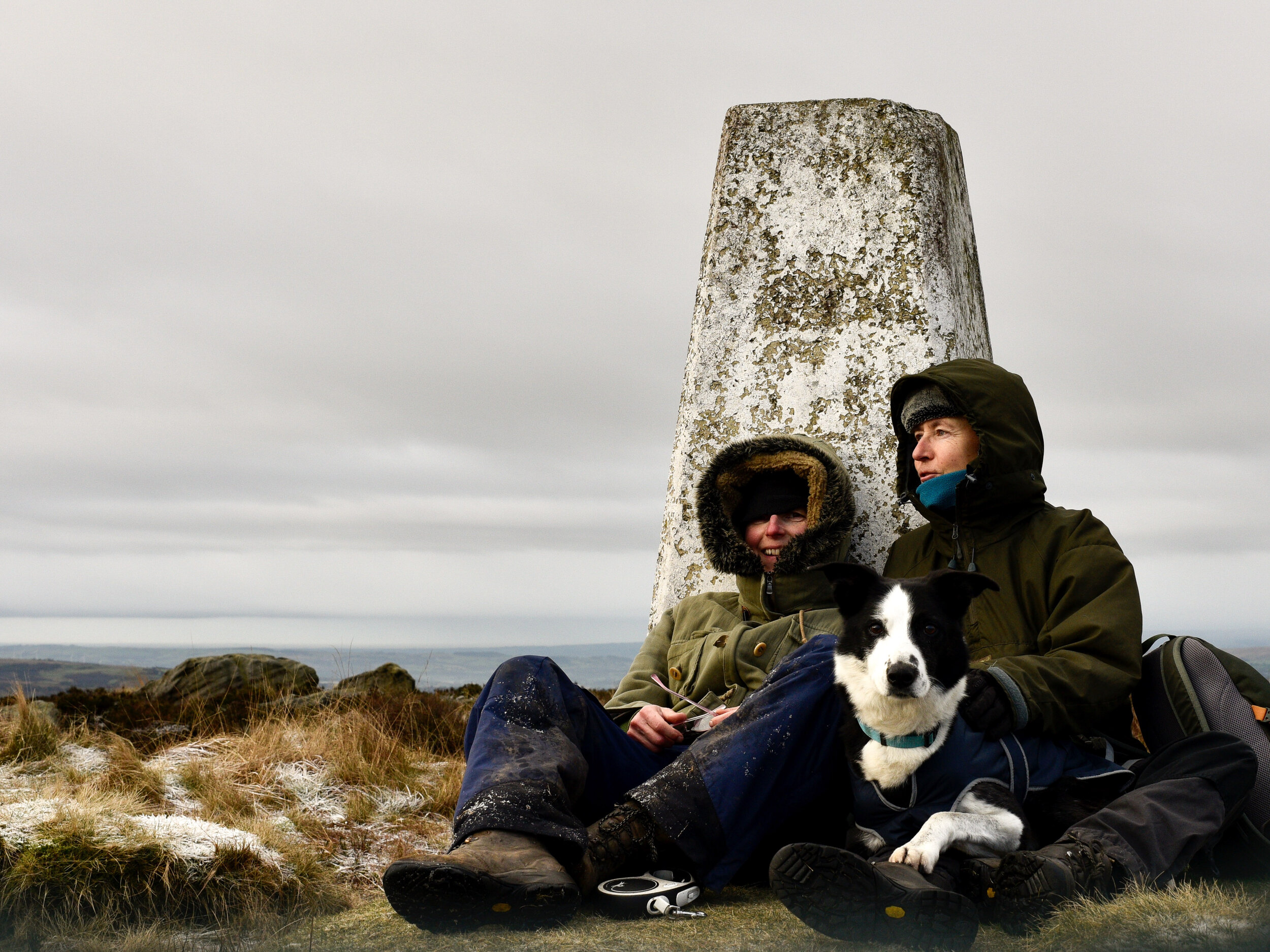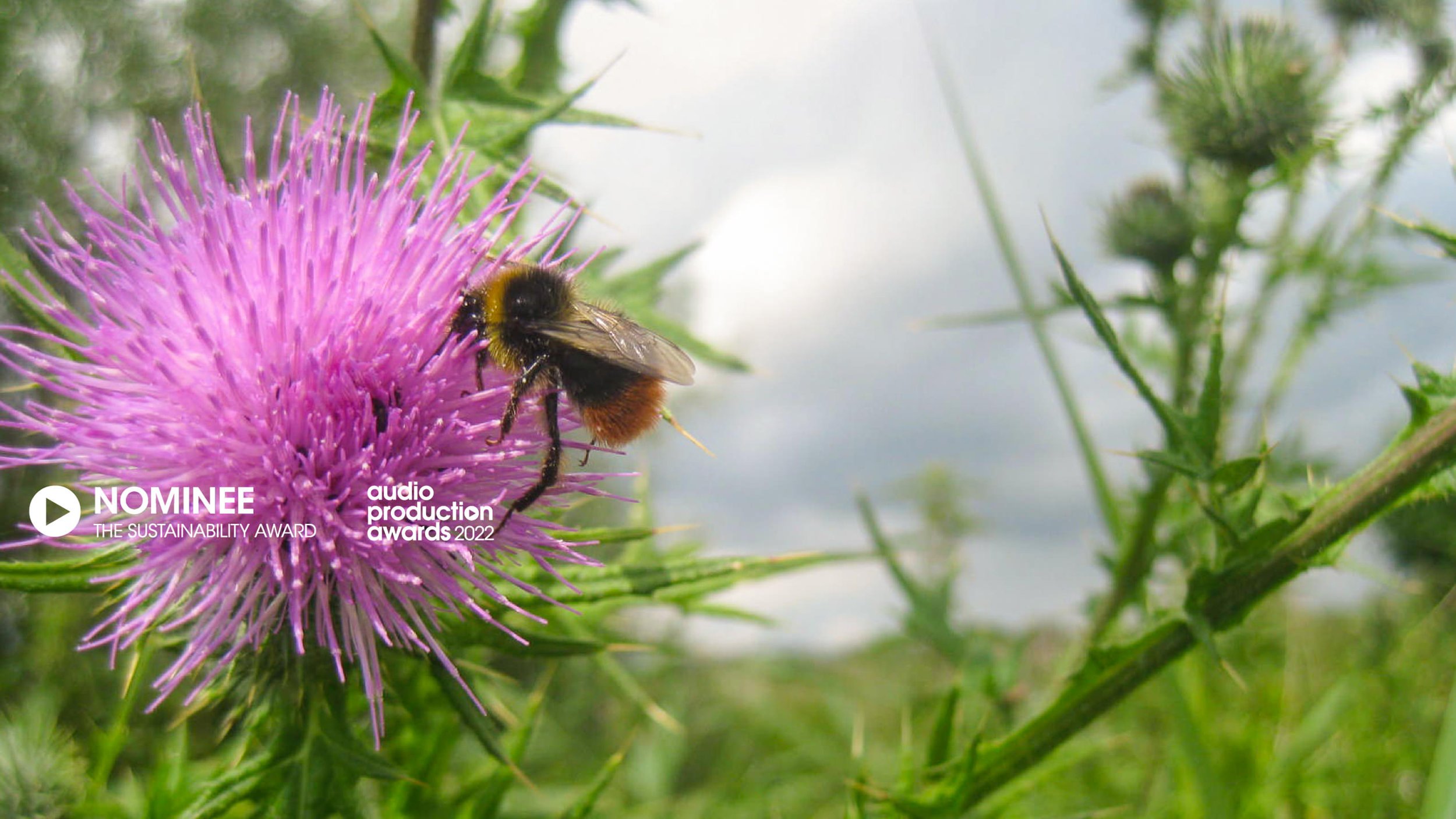
Nature Tripping Podcast
Nature Tripping is a podcast project by Jo Kennedy and Cathy Shaw based on the simple idea of making small audio trips outside to explore nature in Britain. We’ve been into the woods, up to the moors, down to the river bank, on to estuarine mudflats and even across the sea to remote islands. We like to chat but also listen-in to the surroundings, so in each podcast you’ll find a mixture of informative conversation and the sounds of the local surroundings and wildlife. We made our first episode back in November 2019 and have continued on and off since then as time allows, with recent episodes including conversations with ecologists and environmental organisations, artists and scholars. You can listen to all episodes here, or find Nature Tripping on Apple Podcasts, Spotify, Castbox and other podcast directories.
“I love the pace of these podcasts. Informative and entertaining commentary but the place with its nature and sounds is allowed proper prominence. Great sound recording”
“Felt like I was on a brilliant bird watching walk with an expert listening to this....can’t wait to listen to the next one!”
“Just tweeted your podcast - very good sound quality and you guys have very appealing broadcast voices”
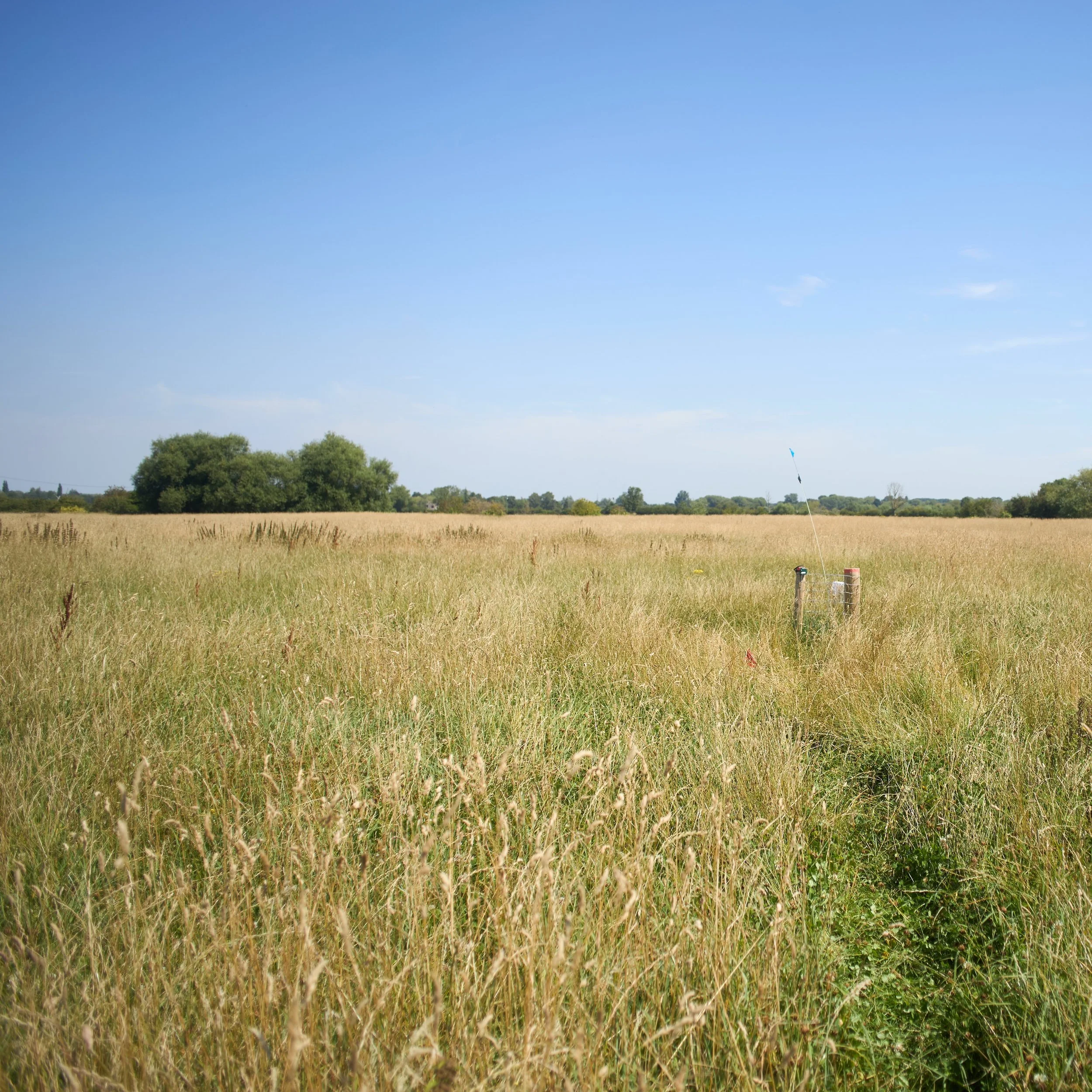
Nature Tripping Episode 30 - Regenerative Farming and Life in the Soil
Jo and Cathy meet Bailey for an introduction to Regenerative Farming and a discussion about the experimental field work he has been doing with the University of Oxford on the impact of different types of grazing management on biodiversity.
Three different scenarios - conventionally grazed pasture, mob-grazed pasture, and passive restoration (where land is left untouched) - have been monitored for all sorts of biodiversity, with Bailey’s focus on the life beneath our feet. Soil might look pretty dull, but in fact it’s alive with invertebrates, and is a vital component of ecosystems. Can listening to it provide important information on soil health? If so, what does a robust experimental method for doing that even look like? Bailey has some of the answers… and the sounds.

Episode 29 - Nature Tripping Goes East
In this episode Cathy and Jo travel east to Poland. Join them along the way as they cross borders and head into the primaeval forests of Bialowieza and the vast marshlands of Biebrza - both complex ecosystems, alive with the sounds of mammals, birds and amphibians. The variety and abundance of species they encounter are astounding but also give them pause to reflect on what Britain has lost and why.
With thanks to Tomasz Jezierczuk of www.wildpoland.com
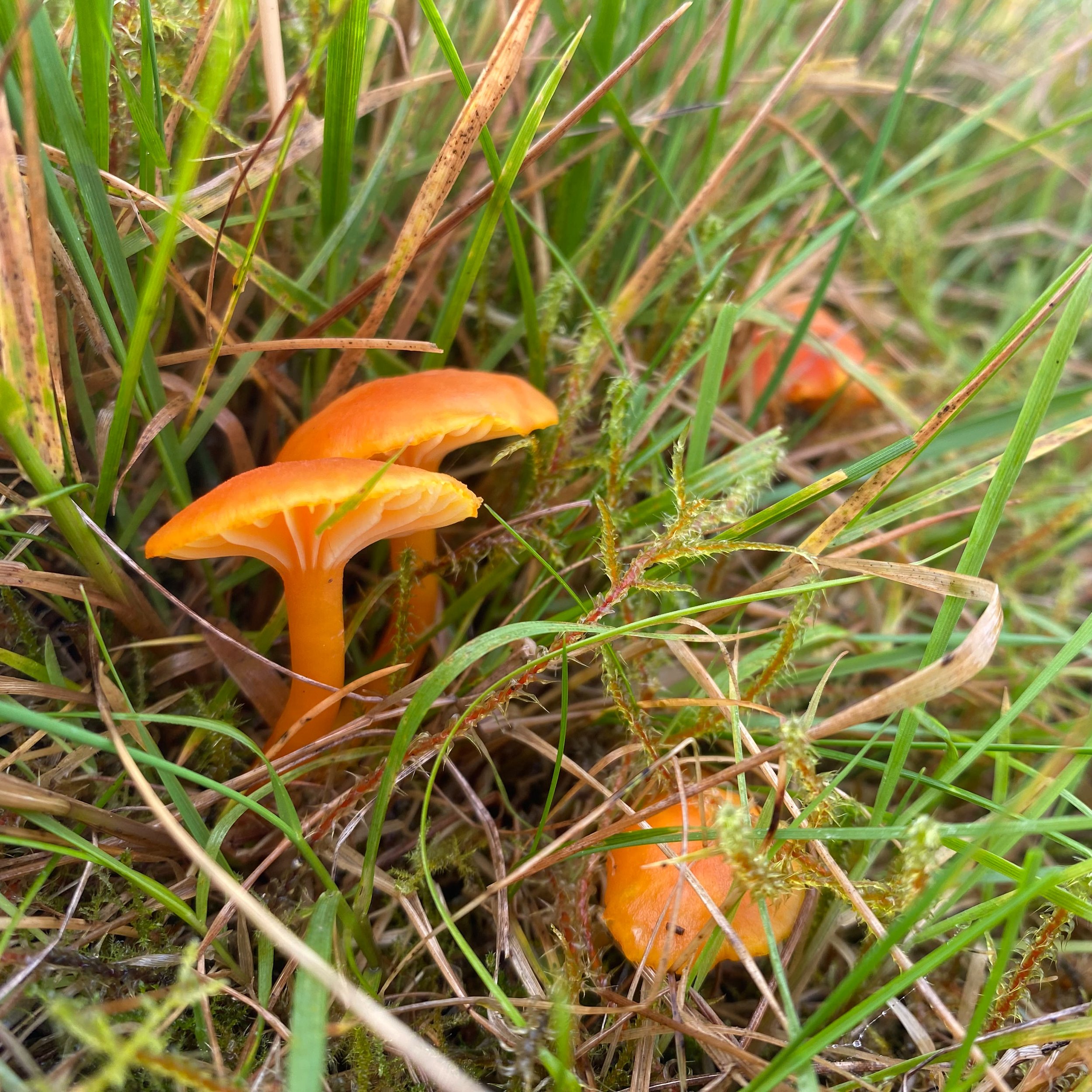
Nature Tripping Episode 28 - Grassland Fungi
Jo and Cathy spend this episode with National Trust project officer and ecologist Steve Hindle on the slopes of Calderdale, in what looks like an ordinary field… but isn’t. They discuss the fascinating lives of fungi and their vital but often overlooked role in the ecosystem, not only as decomposers or parasites, but also as symbiotic partners engaged in a range of very sophisticated relationships with plants. Steve’s partner Sarah Flood scours the field for waxcaps, pinkgills, clubs, corals and earthtongues. Each has their own ecological niche, and all are indicators of ‘ancient grassland’, a rare habitat which Calderdale, with its challenging farming conditions, has managed to hold on to. Landowner Liz tells of the sometimes confusing journey her and her partner took to work out the best management options for the field, the steps they are taking to protect it, and of course, her new found passion for fungi!

Nature Tripping Episode 27 - The Curlew
If you go up to Calderdale’s rough pasture and moorland during the spring and early summer you might encounter a variety of breeding birds – small ones like meadow pipits and skylarks and larger ones like oyster-catchers, golden plover, snipe and lapwings. There is perhaps none more distinctive though, both in its look and sound than the curlew – a large, elegant, brown wader with a very long curved beak and a strange, some say ghostly, bubbling song. Whilst numbers across Britain are going down and down, here in the South Pennines, we still experience their arrival every spring and seem to be holding on to our breeding curlew population. In this episode Cathy recounts her lifelong love for this iconic bird and discusses her British Trust for Ornithology survey work, sharing insights on local population levels and how we might conserve them. We also visit a nearby beauty spot (the Bridestones) and speak to local expert Andrew Cockcroft about a community-led initiative to buy the 114-acre site and restore its peat bog and acid grassland ecosystems for the benefit of wading birds, other wildlife, and people.

Nature Tripping Episode 26 - Sounds from a Hebridean Coast
It’s always a pleasure to hear from our listeners and on occasion people have asked for an episode dedicated purely to nature sounds. This is one such episode. It’s a compilation of ambient field recordings made around the coastline of the Hebridean island of Tiree. Slow radio indeed, and we recommend listening on headphones.
This is an energetic and vibrant landscape. You can immerse yourself in the elemental sounds of waves and wind, and experience a wide variety of birdlife. We begin the episode with the faint cry of sea eagles high in the sky, then move back to the seashore, plunging down to listen to the underwater sounds of a limpet steadily munching its way across a rock, and the popping and crackling of a forest of sea kelp. Back on dry land and a little way inshore a fulmar colony prepares for the 2024 breeding season on a small cliff outcrop, in the close company of nearby starlings. We also meet common gulls, oyster catchers and redshank going about daily life on the shore and as darkness falls pay a visit to a grassy shoreline field to hear the night-time activity of snipe and graylag geese, before finally returning to the waves.
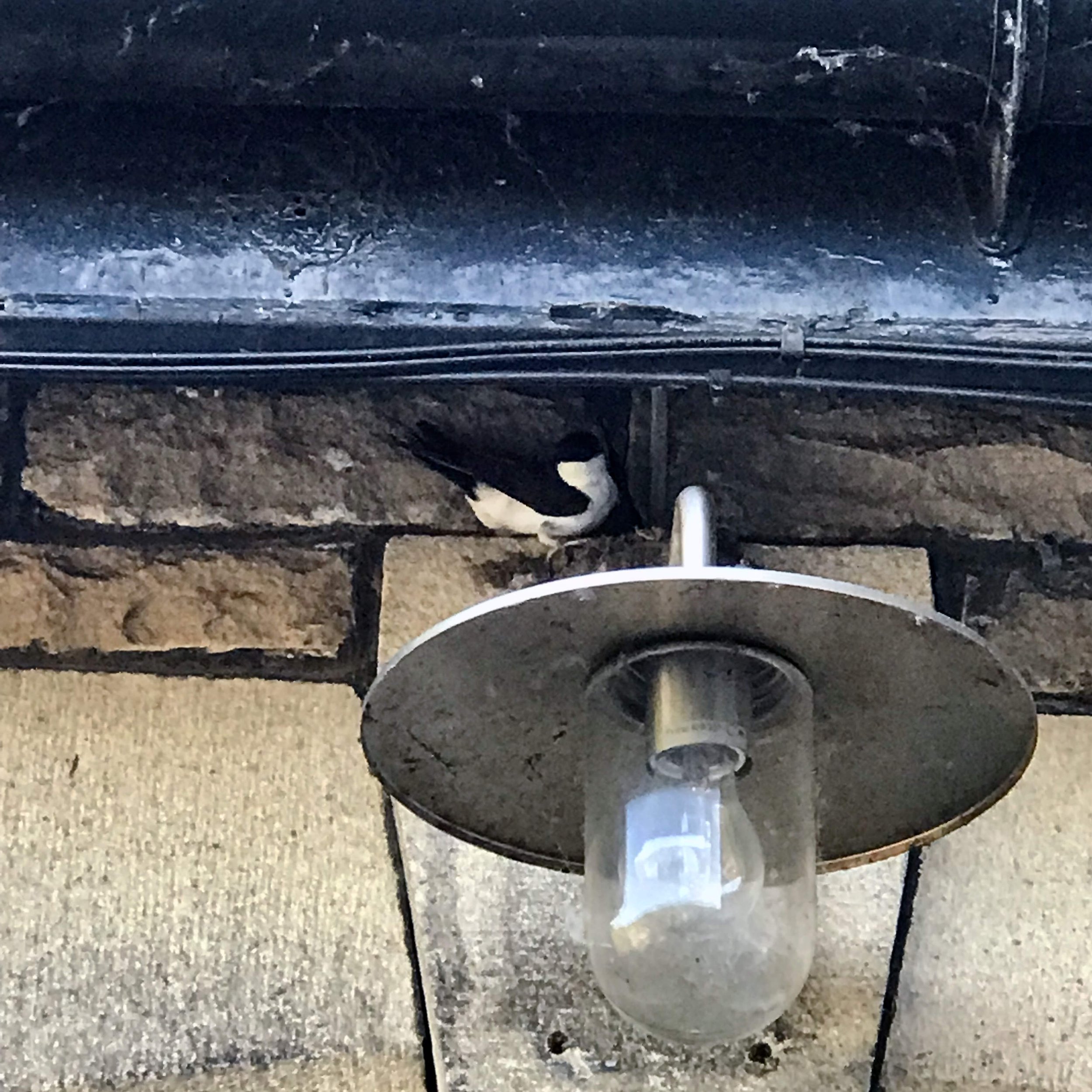
Nature Tripping Episode 25 - House Martins
A stone’s throw from the river in Hebden Bridge town centre Jill and Kathryn make a discovery under their eaves: House Martins have arrived! A summer of ups and downs follows and we track events over the year to learn more about the lives of these ‘epic’ little migrant birds, and how to love a ‘pile of poop’. We also find out more about Britain’s other Spring arrivals swifts, swallows and sand martins, and how to tell them apart.

Nature Tripping Episode 24 - Rewilding
What does rewilding in the British Isles mean, how do you start it off, and what happens when you do? In this episode we visit the 3000 acre Broughton Hall estate in Yorkshire with Rewilding Britain’s Alastair Driver to see how nature is bouncing back. A wide range of interventions and actions are now underway on land that was conventionally farmed for sheep and crops until very recently. Whether it’s tree planting, leaky dam construction, the introduction of ecosystem engineers (beavers), or just letting nature do its thing and embracing ‘scruffication’, the benefits for wildlife, the environment, the climate and people are compelling.

Nature Tripping Episode 23 - Building Resilience
In an episode centred on climate change and community resilience, Jo and Cathy stay in their local town - Todmorden - to chat with Barbara Jones, a pioneer of natural building methods. Sustainable materials including lime, clay, wool, wood fibre and straw as well as stone and timber come into their own. We find out practical steps we can all take in our homes, whether they are old or new, to improve breathability (thus minimising unwanted condensation and mould), reduce heat-loss, and shield indoor spaces from increasing outside temperatures. Barbara also tells the story of how the local college, condemned for demolition, was rescued by the community and is being transformed into a grassroots hub, sharing the skills and resources needed to take on the climate change challenge.
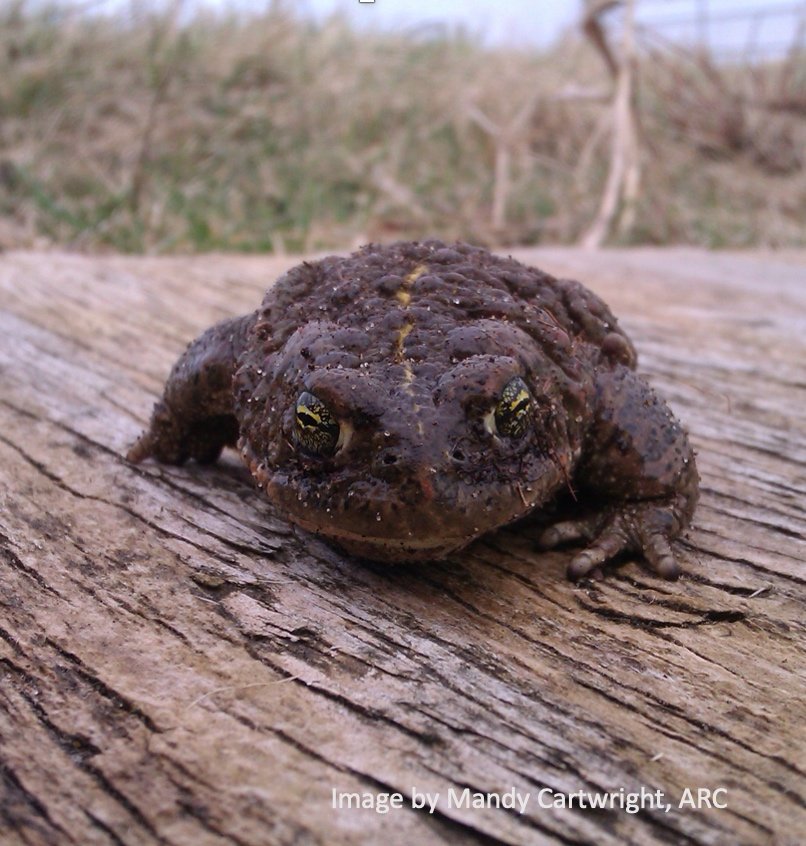
Nature Tripping Episode 22- Natterjack Toads
In this episode we visit Gronant and Talacre dunes with Mandy Cartwright from the Amphibian and Reptile Conservation Trust to investigate the only Welsh population of Natterjack Toads, re-introduced after the Second World War. The shallow pools (scrapes) and sandy burrows provide a perfect habitat, but development pressures, predation, human activity and climate change mean life for these small, yellow-striped amphibians is precarious. How exactly do Natterjack Toads live, and what are landowners and conservationists doing to ensure they keep croaking long into the night?
With thanks also to Yvette Martin (ARC) and Darren Mason (National Trust)
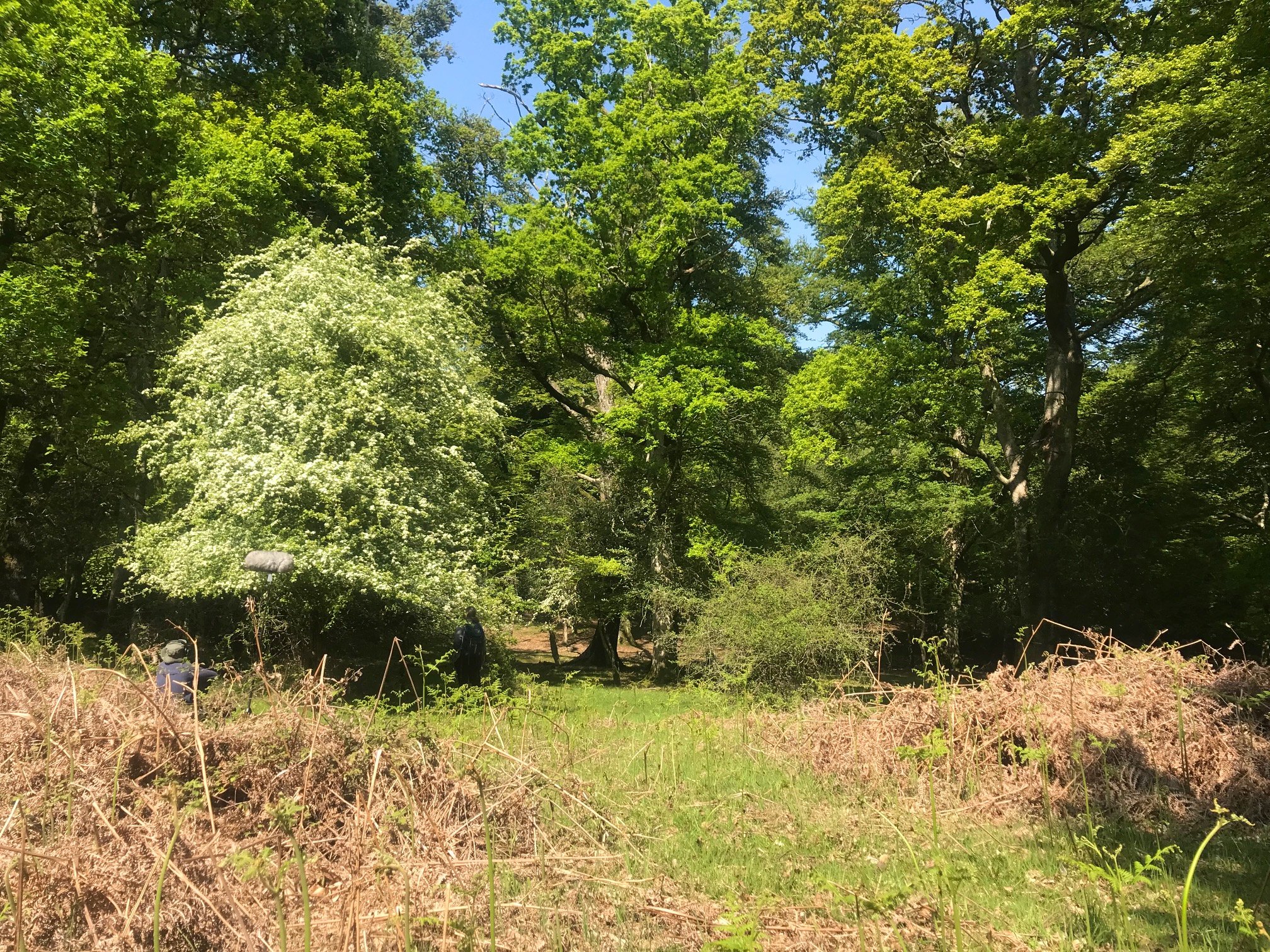
Nature Tripping Episode 21 - The New Forest
What does the future hold for the ancient trees of the New Forest? Join us inside the Forest, at Denny Wood, for an in-depth discussion with ecologist Adrian Newton and naturalist Lynn Davy. Long term ecological monitoring of the woodlands is revealing the rapid and dynamic transformation of much-loved habitats that have existed for thousands of years. Why is this happening? Who are the winners and losers? How should we assess the condition of an ecosystem that is changing so rapidly, and how do we go about making conservation management decisions in such an ecologically and culturally complex landscape? Are processes of recovery - as well as collapse - in motion and if so, how can we promote these and ensure the future resilience of one of England’s most biodiverse places?
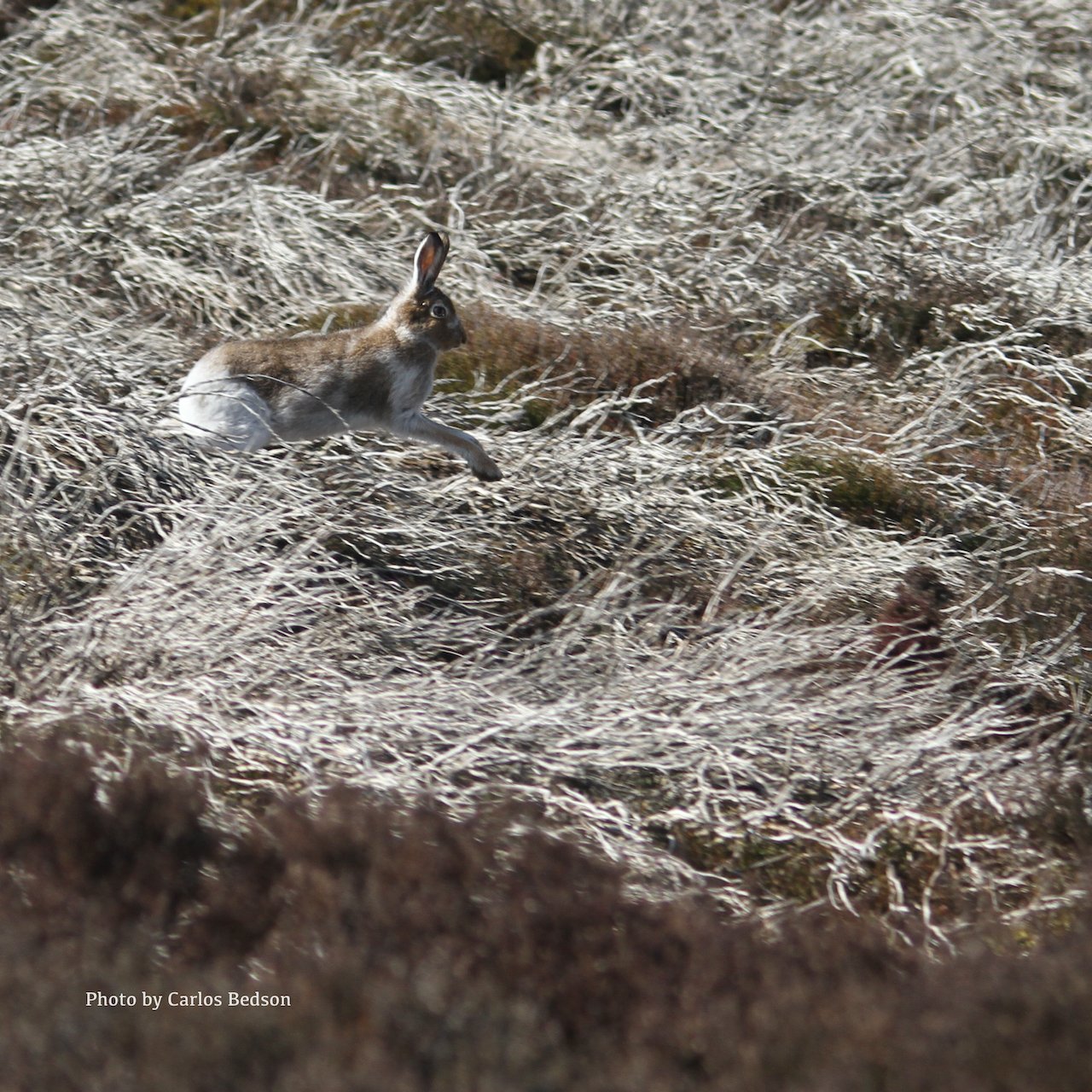
Nature Tripping Episode 20 - The Mountain Hare
Cathy and Jo join wildlife biologist and hare expert Carlos Bedson on location in the Dark Peak to find out more about the only mountain hares in England. Their ancestors arrived on a train from Scotland! 500 metres up on the moor looking out for ‘white fluffy blobs’ Carlos explains more about the likes and dislikes of this amazing creature, his long-term survey work to map the extent and size of the Peak District population, how to go about seeing one, and what we can do to ensure their continued survival.

Nature Tripping Episode 19 - The Great Yellow Bumblebee
Join Jo and Cathy for a Gaelic adventure to find out more about one of Britain’s rarest bumblebees – the Great Yellow Bumblebee (Bombus distinguendus). We meet ecologist Janet Bowler on the dunes to discover more about what one small island has done to keep its special bee buzzing. Charlotte Vale and Molly Knowles contribute readings in Gaelic from Beataidh Banrigh Super-Bee, a story book created by the children of Tiree.

Nature Tripping Episode 18 - Poetry and Birds in the Industrial Revolution
“Come, summer visitant, attach to my reed roof your nest of clay”. In this episode Jo and Cathy look back to the Victorian era with poetry scholar Clara Dawson. Clara introduces us to poems by Charlotte Smith, William Wordsworth, Christina Rosetti, Edward Thomas and Thomas Hardy, and the interweaving of human and bird worlds. What is revealed about the poets’ relationships with nature as industrialisation took grip across the country? And how might these poems spark our own imaginations, both in terms of experiencing nature’s previous plenitude, and in forging new relationships with the living world to carry us into an uncertain future? The poems are read by Clara and set to field recordings. This episode was supported by the University of Manchester.

Nature Tripping Episode 17 - A Shropshire Graveyard
This episode takes Cathy and Jo to Shropshire to explore a church graveyard. Harriet Carty, from the charity Caring for God’s Acre, explains all about these oases of species-rich grassland, and how to manage them. As well as meeting some of the plants and other creatures that make the graveyard their home - bats, rooks, butterflies, bees - they have a close encounter with an ancient yew tree, and find out how important burial grounds are to people, past and present.

Nature Tripping Episode 16 - Little Woolden Moss
Following on from Episode 15 Jo and Cathy make a return to the peatlands, this time to a lowland raised bog on the outskirts of Manchester and Salford. Little Woolden Moss formed over thousands of years but was almost totally destroyed in the 1990s by peat extraction – it became a barren, lifeless place, swirling with clouds of black dust. Jo and Cathy meet Jenny Bennion from the local Wildlife Trust and Dave Steel, a birdwatcher and bog volunteer, to find out how it’s now being brought back to life and becoming a wildlife haven once again.

Nature Tripping Episode 15 - Peat Bogs
Jo and Cathy venture into squelchy upland territory in search of sphagnum moss, a key species of the peat bog. Discovering that a third of the UK was once bog or fenland, and that most has now been degraded, they find out what needs to be done to restore these watery wonderlands and their carbon capturing powers. Up in Galloway they meet environmental artist Kerry Morrison and learn all about a tasty project which reconnects a local community with their peatlands.

Nature Tripping Episode 14 - The Corncrake
Jo takes a trip up the west coast to the Inner Hebrides to join Cathy who is helping with the RSPB’s annual corncrake census on the Isle of Tiree. Locating these elusive birds involves listening for calling males in the dead of night. Join Jo and Cathy on a midnight journey to track them down, followed by an in-depth conversation with RSPB officer John Bowler who shares the story of the corncrake, why the Inner Hebrides remains one of the UK’s last strongholds for these birds, and what is being done to look after future generations.

Nature Tripping Episode 13 - Learning Birdsong in the Coronavirus Lockdown - Part 4
Jo and Cathy resume learning birdsong in lockdown, this time tuning into the calls of the blue tit, great tit and coal tit. With Spring fast approaching, gardens, parks and woods are alive with the sounds of these three common UK tit species, but it’s easy to be confounded by all their chirping and tweeting, and treat them as background noise. In this episode Jo and Cathy set about investigating their individual sonic signatures and explore how to distinguish and disentangle (most of the time!) one species from each other. (Blue Tit @ 4m 23sec; Coal Tit @ 16m 35sec; Great Tit @ 23m 45sec)

Nature Tripping Episode 12 - The River Colne
Setting out to explore the River Colne, Jo and Cathy start at its source on the edge of the moors and journey downstream through urban West Yorkshire to its confluence with the River Calder. Their trip takes in weirs, walls, abandoned mills, industrial pollution, combined sewer overflows, liminal space and river life. As well as exploring the historical and present day human impacts on the river, they begin to question more deeply our relationship with rivers and the role they can play in our lives.

Nature Tripping Episode 11 - The Grouse Moor
Vast swathes of Britain's upland are currently managed for grouse shooting. As the official start of the shooting season kicks off (12th August) Jo and Cathy finally decide to confront this controversial topic. Listen in from their local grouse moor to find out about the history of this peculiarly British pastime, the ecological and environmental consequences of managing the moors in this way, the range of stakeholders involved, and possibilities for the future.
